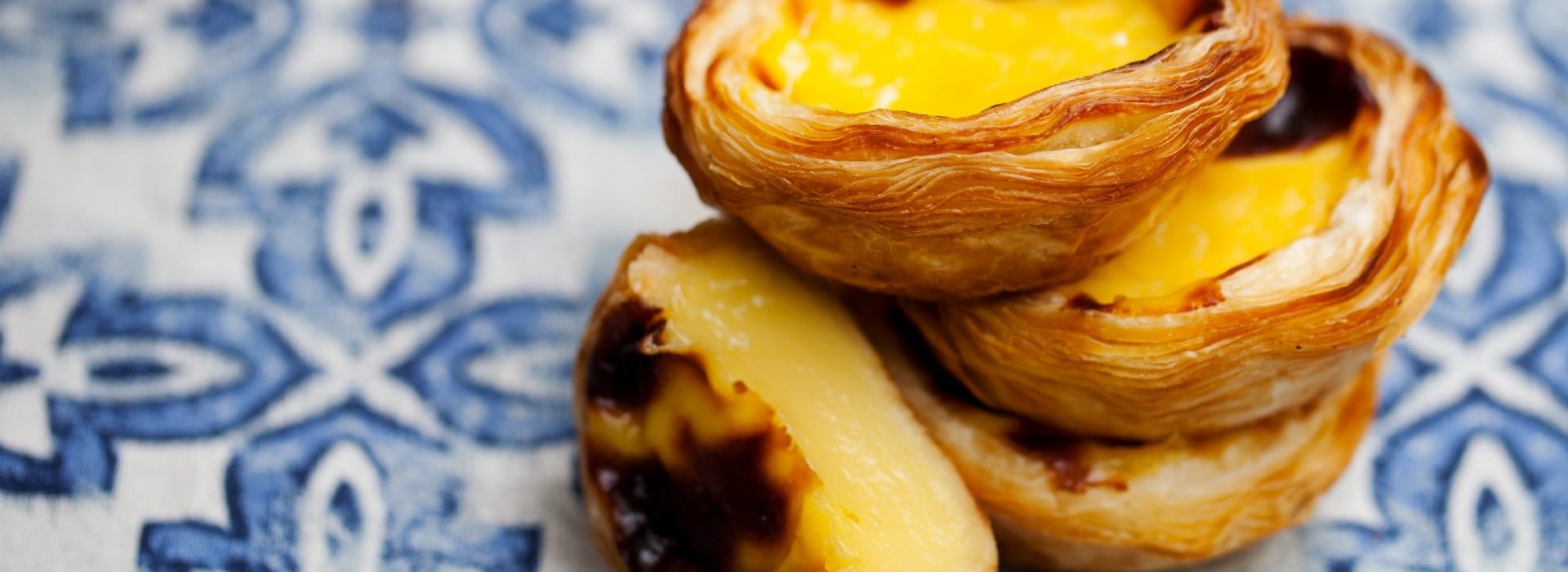Pastéis de Nata: Explore Desserts in Portugal
Perhaps a teacher forced you to do it in school, perhaps it was of your own volition as an adult. Perhaps it was so epic it became a symbol of Portguese nationalism and made strangers crave desserts of Portugal like pastéis de nata and churros. Enter Luís de Camões and his Homer-esque poem, Os Lusíadas.
As a result of this powerful poem, Day of Portugal, Camões, and the Portuguese Communities falls on June 10. It commemorates the death of the poet and literary icon in 1580. On this day every June, Portuguese people everywhere take a moment to acknowledge their country’s history and explorative achievements through a variety of celebrations that include some pretty drool-worthy Portugese desserts.
Lesser Known Portuguese Pastries
Soon we’ll look at some well-known treats like churros and pastéis de nata. But first, let’s make like Portuguese explorers and unturn some less familiar sugary rocks. These will reveal malasadas, cavacas, bola de berlim, and bolo de arroz. As it turns out, malasadas are just like doughnuts. They’re small fried balls made from a yeast dough and coated in sugar.Cavacas, on the other hand, are more similar to popover pastries like profiteroles. But instead of having custard fillings, they have an icing drizzle. Next we have bola de berlim and bolo de arroz. The former is another doughnut, this time a jam-filled Berliner. The latter is a simple, little rice cake. It’s similar to that found across countries like China, Cambodia, India, Japan, Korea, Vietnam, and the Philippines.
But what else could we eat to help celebrate the Day of Portugal? Caramel flan needs no explanation, but we will help with folhados doce de gila. This is a candied pastry made with gila, a marrow with pale flesh that’s incredibly cute. It also goes by the names fig-leaf gourd, Malabar gourd, chilacayote, and seven-year melon.
We won’t stop our exploration there, though. If we did, we’d overlook the sponge-cakey goodness of Pão-de-Ló, or the crispy and egg custard filled Tenúgal pastries. Not to mention arroz doce, which is Portugal’s version of rice pudding! Sericaia is a similar type of pudding, this time without the rice. Meanwhile, Queijadas de feijão are adorable little tart shells that have a sweet bean filling.
Pastéis de Nata and Churros
Pão de Deus translates to bread of God, and we can best describe it as a sweet coconut-brioche breakfast roll. This leads us to other Portugese desserts created by nuns and monks who tried to supplement their income. Barriga de freira means nun’s belly, while papos de anjo means angel’s chests, and toucinho do céu translates to bacon from heaven! It’s the Catholic monks at the Hieronymites Monastery in Lisbon who were responsible for Portugal’s most treasured pastry, the coveted pastéis de nata. At the time, egg-whites were commonly used to starch the religious habits worn by monks and nuns. This meant a surplus of egg yolks… a crucial ingredient to any custardy cake or pastry!
Hold on, we feel like we’re missing something. We just talked about the pastéis de nata, we’ve touched on the Portuguese doughnuts and puddings, we even mentioned the speckled coat of the gila squash… What could it be? What were we saving for the end? It has to be CHURROS! And for good reason.
You’d be hard-pressed to find someone who doesn’t know about – and love – the long, fried pastry. Coated in cinnamon-sugar and typically dipped in chocolate, the Portuguese borrowed the recipe from the Chinese and to this day often eat it for breakfast. Which is something you’re going to need to get you through the Camões poem, as it contains a total of 8,816 lines of verse! Why not start with one chocolate-dipped churro, two pastéis de nata, a little bacon from heaven, three malasadas and explore the desserts of Portugal.





